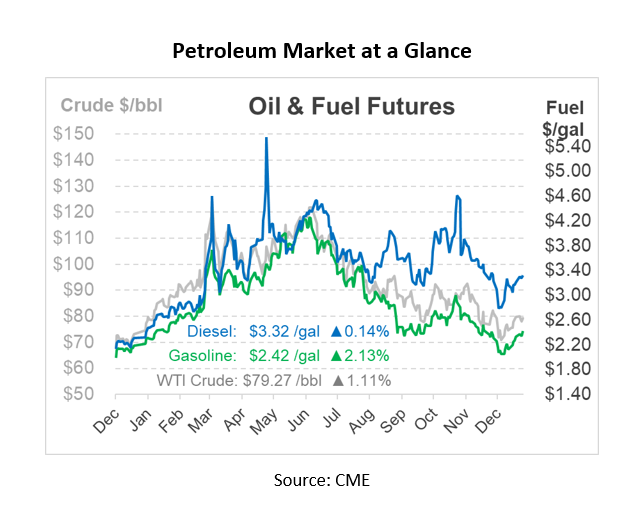
Trending Topic of 2022 – Supply Shortages
Analysis by Sydney Casey
FUELSNews will not be published on Monday, January 2, due to the holidays. We wish you a bright and merry New Year!
If there is one trend for fuel markets in 2022, it’s supply shortages. Out of FUELSNews’ top ten most-read articles, the top three are related to fuel and DEF shortages. These supply shortages were brought on by countless issues, such as refinery shutdowns, pipeline outages, hurricanes, winter storms, China’s COVID policies, Russia’s invasion of Ukraine, price caps, and more. Since we are talking about trends, let’s take a closer look at what sparked interest in 2022 FUELSNews articles.
#1: The DEF Shortage – As Prices Rise, Supply Challenges Continue
The number one read article for 2022 was January’s coverage of the DEF supply shortage. This article explained why DEF shortages were occurring, which was due to labor shortages and supply gaps. Logistical concerns were another reason for the scarcity. It doesn’t take much for DEF deliveries to fall off track because there are far fewer carriers for the product as opposed to diesel and gasoline, so one minor setback can cause major supply challenges.
#2: Supply Alert – October 25, 2022
The second most read article for the year was the Oct. 25 supply alert, which came in between two damaging hurricanes to the East Coast that shut coastal fuel markets down for days. Moving into Alert Level 4, Mansfield, among other fuel procurement and logistics companies, was preparing customers for the worst. Customers were encouraged to keep an eye on their inventory levels and when to secure their next order to accommodate market volatility and supply uncertainties. Force majeure was even declared by some companies throughout 2022 as a result of these same concerns.
#3: What Does “Diesel Shortage” Really Mean?
FUELSNews’ third most popular article of 2022 was one that explained what a diesel shortage truly meant and how to navigate volatile market situations. The article explained that a diesel shortage was not an isolated event, but rather a symptom of the larger economic draws. Not only did the shortage mean less supply on hand, but it also called for the potential of increased prices as demand remained elevated. It was also a notice that the logistics may change for fuel delivery as suppliers with available inventory may be further away than consumers were typically accustomed to, causing increased freight charges to deepen the muddle.
One thing to remember about these trending articles is that shortages did not mean service failures, just a notice to consumers that supply was tight in certain regions of the US and how to prepare for those types of situations. Some analysts predict this trend to continue for 2023, but that is undetermined. It will be interesting to see what geopolitical concerns arise this coming year and how supply and demand will be impacted in the industry. If this is still a concern for you, check out Mansfield’s supply security options and rest assured that your business will be protected when the next supply shortage spikes.
This article is part of Daily Market News & Insights
MARKET CONDITION REPORT - DISCLAIMER
The information contained herein is derived from sources believed to be reliable; however, this information is not guaranteed as to its accuracy or completeness. Furthermore, no responsibility is assumed for use of this material and no express or implied warranties or guarantees are made. This material and any view or comment expressed herein are provided for informational purposes only and should not be construed in any way as an inducement or recommendation to buy or sell products, commodity futures or options contracts.






